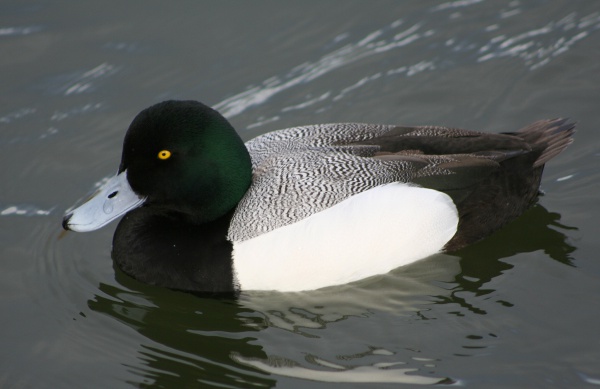Facts About Greater scaup
The greater scaup, often referred to simply as "scaup" in Europe and known as the "bluebill" in North America, is a medium-sized diving duck that is slightly larger than its close relative, the lesser scaup. During the summer, these birds breed in regions such as Alaska, northern Canada, Siberia, and northern Europe. As winter approaches, they migrate to the coastal areas of North America, Europe, and Japan.
Male greater scaups are particularly striking with their blue bills, yellow eyes, and dark heads that exhibit a greenish sheen. In contrast, females are primarily brown but display white patches on their wings. These ducks prefer to nest near water, often selecting islands in northern lakes or mats of floating vegetation for their nests. Female greater scaups typically lay between six and nine eggs. Once the ducklings hatch, they are covered in down and can follow their mother almost immediately.
In terms of diet, greater scaups dive underwater in large groups known as "rafts" to feed on aquatic mollusks, plants, and insects.
The greater scaup was first described by Carl Linnaeus in 1761 and is currently classified under the genus Aythya. They have a circumpolar distribution, breeding around the Arctic Circle in both the Old and New Worlds and wintering along the coasts of North America, Europe, and Asia.
These birds face several threats, including predators such as owls, skunks, raccoons, foxes, coyotes, and humans. They are also at risk from becoming entangled in fishing nets and from pollutants. Despite these dangers, conservation efforts have helped maintain their population, and they are currently listed as a species of "least concern" on the IUCN Red List.
Humans interact with greater scaups primarily through hunting, both for sport and commercial purposes, in North America and Europe. Hunters often use shotguns and decoys to attract these birds, and there are regulations in place to ensure that hunting is conducted responsibly. Additionally, banding programs provide crucial data on the migration patterns and survival rates of greater scaups.

 Czech Republic
Czech Republic